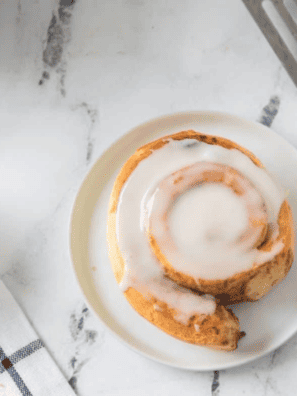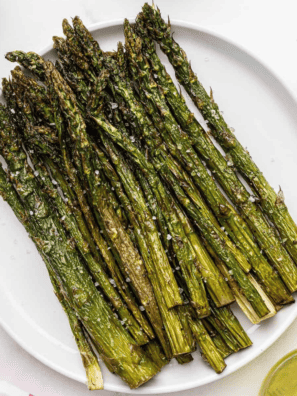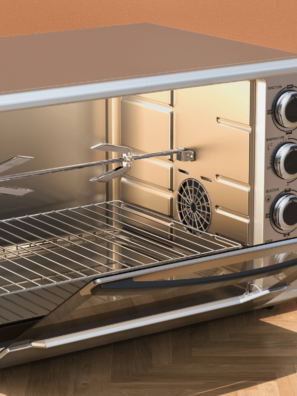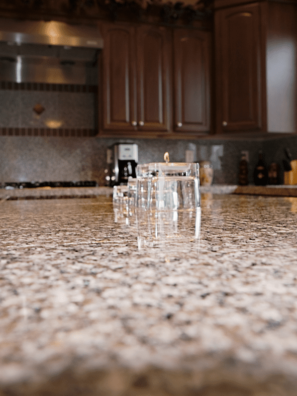How To Use A Grill Pan On A Glass Top Stove — Cooking with a grill pan on a glass-top stove can be a delightful experience, as it allows you to enjoy the benefits of grilling indoors without needing an outdoor grill.
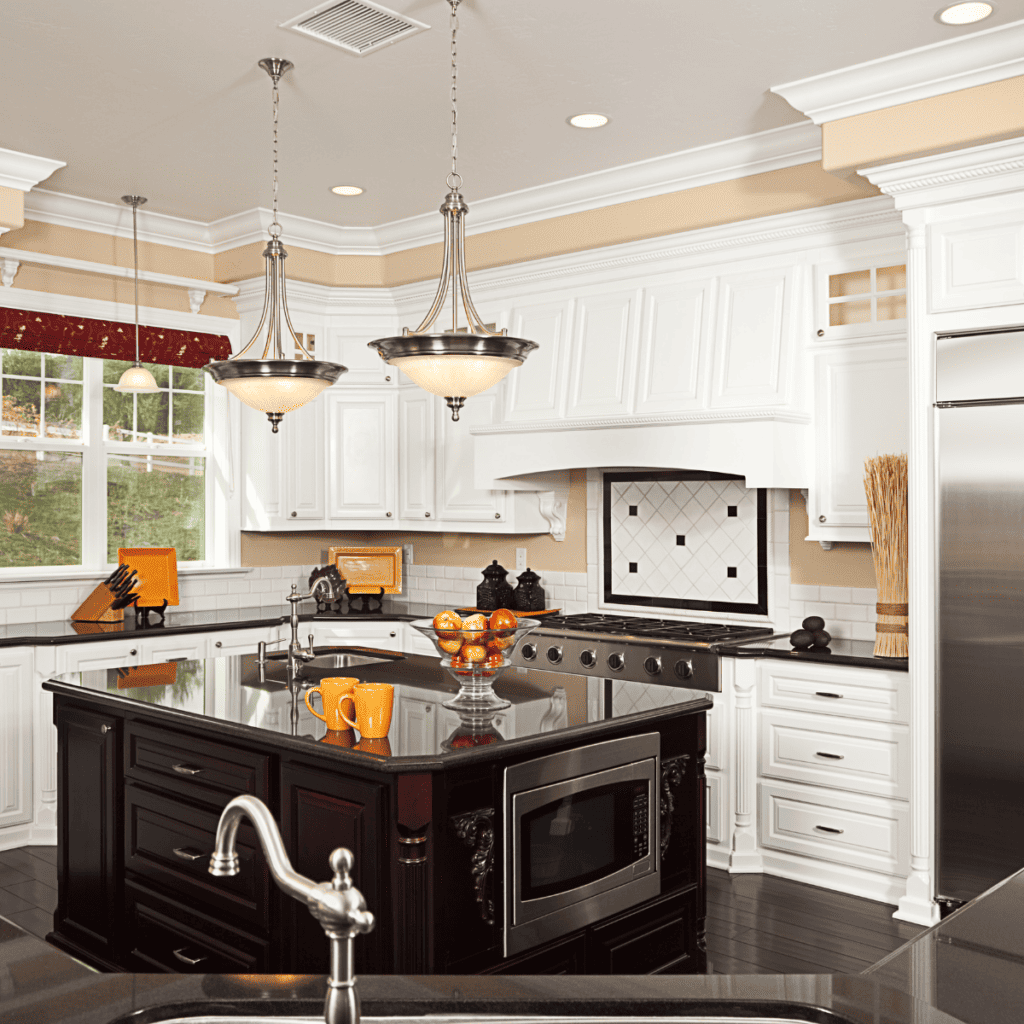
However, using a grill pan on a glass-top stove requires special care to prevent damage and ensure safe and effective cooking. In this comprehensive guide, we will walk you through step-by-step instructions on properly using a grill pan on a glass-top stove. From choosing the right grill pan to maintaining the stove’s glass surface, we’ll cover all aspects to make your cooking experience successful.
Why Use A Grill Pan On Glass Top Stove?
Using a grill pan on a glass cooktop offers several benefits and advantages, making it an appealing cooking method for many home cooks. Here are some reasons why you should consider using a grill pan on a glass-top stove:
- Indoor Grilling: The primary advantage of using a grill pan on a glass-top stove is that it allows you to enjoy the experience of grilling indoors. This is particularly beneficial during unfavorable weather conditions or in apartments and homes without access to an outdoor grill. This works whether you have an electric stove or a gas stove.
- Even Heat Distribution: Glass top stoves provide consistent and even heat distribution across the cooking surface. When using a grill pan on a glass top stove, this even heat distribution ensures that your food cooks uniformly and prevents hot spots that could lead to uneven cooking.
- Retention of Juices and Flavors: Grill pans have ridges that create sear marks and allow fat and juices to drain away from the food. The glass top stove’s flat surface allows the grill pan to maintain direct contact with the food, enhancing the flavors and searing effects.
- Time-Saving: Grilling on a glass-top stove with a grill pan is often faster than using an outdoor grill. Glass-top stoves heat up quickly, and the even heat distribution ensures that your food cooks efficiently.
- Easy to Clean: Cleaning a grill pan and a glass-top stove is generally more straightforward than the maintenance required for an outdoor grill. Many grill pans are non-stick, which means food residue is less likely to stick to the surface, making cleanup a breeze.
- Versatility: While grilling is the primary purpose of a grill pan, it is also a versatile tool that allows you to cook a wide range of foods. From vegetables and seafood to meats and sandwiches, a grill pan on a glass-top stove opens up various cooking options.
- No Open Flames: Unlike outdoor grilling, a grill pan on a glass-top stove eliminates the risk of open flames. This provides a safer cooking environment for households with children or pets. The high temperature is perfect for a heavy or cast-iron grill pan.
- Space-Saving: For those with limited outdoor space, using a grill pan on a glass-top stove is a space-saving alternative to a bulky outdoor grill. It allows you to enjoy grilled dishes without sacrificing kitchen space.
- Indoor Smoke Reduction: While traditional grilling can produce smoke, using a grill pan on a glass-top stove helps contain and reduce smoke production. This especially benefits those living in apartments or condos with limited smoke ventilation.
- Consistency: Glass top stoves offer precise temperature control, producing consistent cooking results. This reliability is particularly useful when trying to achieve specific levels of doneness or desired grill marks on your food.
In conclusion, using a grill pan on a glass-top stove provides the convenience of indoor grilling, even heat distribution, retention of flavors, easy cleanup, and a safer, more controlled cooking environment. Whether you’re grilling meat, vegetables, or sandwiches, a grill pan on a glass-top stove is a versatile tool that opens up a world of delicious possibilities in your kitchen.
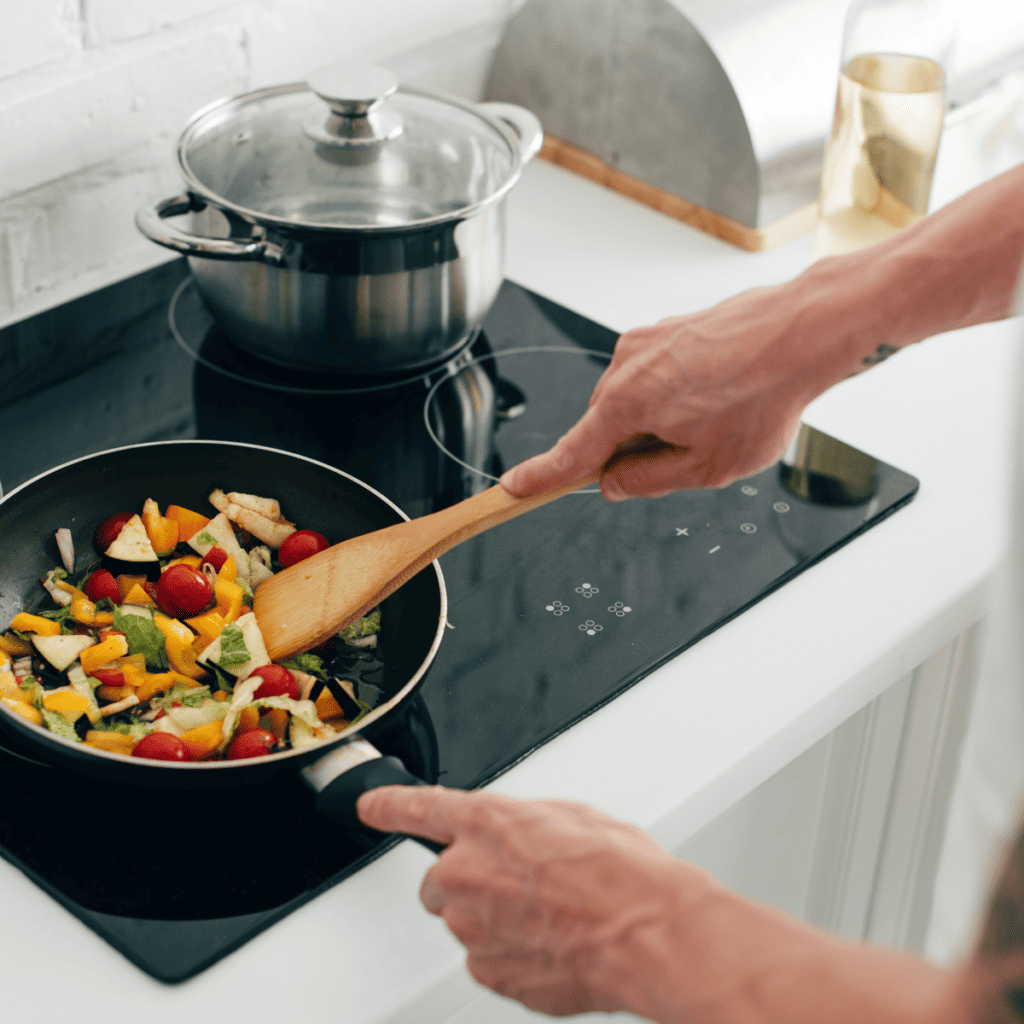
Choosing the Right Grill Pan
Before diving into the cooking process, choosing the right grill pan suitable for a glass-top stove is essential. Here are some key considerations:
- Opt for a Smooth-Bottom Pan: Look for a grill pan with a flat and smooth bottom. Avoid pans with ridges on the underside, as they can scratch and damage the glass surface.
- Check the Material: Select a grill pan made from materials compatible with glass top stoves. Cast iron, stainless steel, and aluminum are excellent choices, as they have good heat distribution properties.
- Pan Size: Consider the size of your glass top stove and choose a grill pan that fits comfortably on one cooking zone without overlapping.
Preparing the Stove and Grill Pan
To ensure a safe cooking experience, it’s essential to prepare the glass-top stove and grill pan properly:
- Clean the Glass Top Stove: Before using the grill pan, thoroughly clean the glass-top stove to remove any debris, spills, or food particles. A clean stove surface will prevent scratches and provide even heating.
- Lift, Don’t Slide: When placing the grill pan on the glass top stove, always lift it instead of sliding it. Sliding can cause scratches, whereas gentle placement prevents damage.
- Preheating the Grill Pan: Turn on the stove and preheat the grill pan on medium heat for a few minutes. Preheating ensures even heat distribution and promotes proper cooking.
Cooking on the Grill Pan
With the preparations done, it’s time to start cooking on the grill pan:
- Use Appropriate Utensils: When cooking on a grill pan on a glass-top stove, use utensils specifically designed for smooth-top ranges. Opt for wooden, silicone, or plastic utensils to prevent scratching the glass surface.
- Adjust Heat Levels: Glass top stoves retain heat, so it’s crucial to adjust the heat settings during cooking to avoid overheating the grill pan and the stove surface. Lower the heat if necessary.
- Monitor the Cooking Process: Keep a close eye on the food as it cooks. Adjust the heat levels as needed to achieve the desired cooking temperature and prevent burning or undercooking.
Cleaning and Maintenance
Once the cooking is done, proper cleaning and maintenance are essential:
- Lift the Pan: When removing the grill pan from the glass top stove, lift it gently instead of sliding it. Sliding can cause scratches or damage to the glass surface.
- Allow Cooling: Let the grill pan cool down before cleaning it. Placing a hot pan under cold water may cause thermal shock and warping.
- Cleaning the Pan: Clean the grill pan following the manufacturer’s instructions. Use non-abrasive cleaners and avoid harsh scrubbing to preserve the pan’s surface.
- Clean the Stove Surface: After cooking, ensure the glass top stove is free from any spills or food residue. Use a non-abrasive cleaner and a soft cloth to clean the surface gently.
Pro Tips For Using a Grill Pan On A Glass Stovetop
Using a grill pan on a glass top stove offers several benefits and advantages that make it an appealing cooking method for many home cooks. Here are some reasons why you should consider using a grill pan on a glass-top stove:
- Indoor Grilling: The primary advantage of using a grill pan on a glass-top stove is that it allows you to enjoy the experience of grilling indoors. This is particularly beneficial during unfavorable weather conditions or in apartments and homes without access to an outdoor grill.
- Even Heat Distribution: Glass top stoves provide consistent and even heat distribution across the cooking surface. When using a grill pan on a glass top stove, this even heat distribution ensures that your food cooks uniformly and prevents hot spots that could lead to uneven cooking.
- Retention of Juices and Flavors: Grill pans have ridges that create sear marks and allow fat and juices to drain away from the food. The glass top stove’s flat surface allows the grill pan to maintain direct contact with the food, enhancing the flavors and searing effects.
- Time-Saving: Grilling on a glass-top stove with a grill pan is often faster than using an outdoor grill. Glass-top stoves heat up quickly, and the even heat distribution ensures that your food cooks efficiently.
- Easy to Clean: Cleaning a grill pan and a glass-top stove is generally more straightforward than the maintenance required for an outdoor grill. Many grill pans are non-stick, which means food residue is less likely to stick to the surface, making cleanup a breeze.
- Versatility: While grilling is the primary purpose of a grill pan, it is also a versatile tool that allows you to cook a wide range of foods. From vegetables and seafood to meats and sandwiches, a grill pan on a glass-top stove opens up various cooking options.
- No Open Flames: Unlike outdoor grilling, a grill pan on a glass-top stove eliminates the risk of open flames. This provides a safer cooking environment for households with children or pets.
- Space-Saving: For those with limited outdoor space, using a grill pan on a glass-top stove is a space-saving alternative to a bulky outdoor grill. It allows you to enjoy grilled dishes without sacrificing kitchen space.
- Indoor Smoke Reduction: While traditional grilling can produce smoke, using a grill pan on a glass-top stove helps contain and reduce smoke production. This especially benefits those living in apartments or condos with limited smoke ventilation.
- Consistency: Glass top stoves offer precise temperature control, producing consistent cooking results. This reliability is particularly useful when trying to achieve specific levels of doneness or desired grill marks on your food.
Can I use any grill pan on a glass top stove?
No, not all grill pans are suitable for glass-top stoves. It’s essential to choose a grill pan specifically designed for smooth-top ranges, with a smooth, flat bottom and no ridges on the underside; the best ones are pans with flat bottoms or griddle pans. Always check the bottom of the pan to make sure that it is flat, before using on your glass stoves, or stove top.
How do I prevent scratches on the glass surface while using a grill pan?
Lift the grill pan instead of sliding it on the glass-top stove to prevent scratches. Also, use utensils made of wood, silicone, or plastic instead of metal, which can scratch the surface. A smooth base is perfect for a new stove, so not all type of cookware will work.
What temperature should I use when preheating the grill pan?
Preheat the grill pan on medium heat for a few minutes before adding the food. Adjust the heat levels as needed during cooking to prevent overheating. This will allow the smooth surface to preheat perfectly.
Can I cook large quantities of food in the grill pan on a glass top stove?
It’s best to avoid overcrowding the grill pan. If you have a large amount of food to cook, it’s better to do it in batches to ensure even cooking and proper grill marks.
How do I clean the grill pan after use?
Allow the grill pan to cool before cleaning. Clean it using non-abrasive cleaners and avoid harsh scrubbing to preserve the pan’s surface.
Can I use high heat settings on a glass top stove with a grill pan?
While glass top stoves can reach high temperatures, it’s generally best to avoid excessively high heat settings when using a grill pan. Stick to medium to medium-high heat for best results.
Can I use oil or cooking spray on the grill pan?
Yes, lightly coat the grill pan’s ridges with oil or cooking spray before adding the food to prevent sticking and to achieve attractive grill marks.
Is indoor grilling with a grill pan on a glass top stove safe?
Yes, indoor grilling with a grill pan on a glass top stove is safe when proper precautions are taken. Always follow the manufacturer’s instructions for both the grill pan and the glass top stove.
Can I grill various types of food on a grill pan?
Absolutely! Grill pans are versatile and allow you to cook a wide range of foods, including vegetables, meats, seafood, and even sandwiches.
Is using a grill pan on a glass top stove time-saving?
Yes, using a grill pan on a glass top stove is generally faster than using an outdoor grill. Glass-top stoves heat up quickly and offer consistent cooking temperatures.
What Are The Best Pans To Use On A Scratch-Resistant Stovetop?
When using a scratch-resistant stovetop, it’s essential to select cookware that is compatible and won’t damage the surface. Here are some of the best options for scratch-resistant stovetops: Remember to use warm water and a non-abrasive sponge to clean the pans after using them. And remember with a little know-how and a little oil, yo can create perfect dishes on your large cooking surface.
- Stainless Steel Pans: Stainless steel pans are an excellent choice for scratch-resistant stovetops. They have smooth bottoms and do not scratch the stovetop surface when properly handled. Look for pans with an aluminum or copper core for better heat distribution.
- Anodized Aluminum Pans: Anodized aluminum pans are another safe option for scratch-resistant stovetops. The hard anodized surface is more durable and less likely to scratch the stovetop than regular aluminum cookware. Nonstick grilled pans are perfect!
- Copper Core Pans: Pans with a copper core are known for their superior heat conductivity. The copper is usually encased within stainless steel, making them suitable for scratch-resistant stovetops.
- Enameled Cast Iron Pans: Enameled cast iron pans are safe for scratch-resistant stovetops, as the enamel coating protects the surface from scratching. These pans offer excellent heat retention and even cooking. And the pan’s weight is the perfect solution for an enthusiastic cook! Look for cast-iron griddle pans, skillets, and cast-iron pots for a great griddle pan.
- Ceramic Non-Stick Pans: High-quality ceramic non-stick pans are safe for scratch-resistant stovetops. They provide a non-stick cooking surface without the need for traditional coatings that may scratch over time.
- Carbon Steel Pans: Carbon steel pans, similar to cast iron, are safe for scratch-resistant stovetops. They require proper seasoning and maintenance to prevent rusting, but they offer excellent heat retention and even cooking.
- Clad Tri-Ply Pans: Clad tri-ply pans, which typically have layers of stainless steel and aluminum or copper, are suitable for scratch-resistant stovetops. They offer the benefits of both materials for efficiency and even cooking.
- Titanium-Infused Pans: Some modern cookware features a titanium-infused non-stick coating that is scratch-resistant and safe for use on stovetops.
Tips for Using Pans on Scratch-Resistant Stovetops
- Lift the pans instead of sliding them to prevent scratching.
- Use appropriate utensils made of silicone, wood, or plastic to avoid scratching the surface.
- Avoid dragging heavy pans across the stovetop, as this can lead to scratches over time.
- Clean the stovetop regularly to remove any debris or spills that could cause scratching during cooking.
Always refer to the manufacturer’s guidelines and care instructions for your specific stovetop and cookware to ensure safe and optimal performance. With the right pans and proper care, you can enjoy cooking on your scratch-resistant stovetop for years to come.


